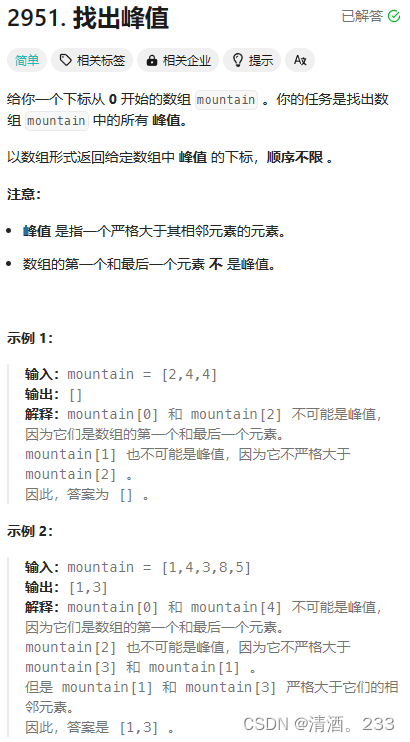1、什么是 JUC
JUC就是 java.util 下的工具包、包、分类等。

普通的线程代码:
- Thread
- Runnable 没有返回值、效率相比入 Callable 相对较低!
- Callable 有返回值!
2、线程和进程
线程、进程,如果不能使用一句话说出来的技术,不扎实!
- 进程:一个程序,QQ.exe Music.exe 程序的集合;
- 一个进程往往可以包含多个线程,至少包含一个!
- Java默认有2个线程? mian、GC
- 线程:开了一个进程 Typora,写字,自动保存(线程负责的)
- 对于Java而言提供了:
Thread、Runnable、Callable操作线程。
Java 真的可以开启线程吗? 答案是:开不了的!
public synchronized void start() {
/**
* This method is not invoked for the main method thread
* or "system" group threads created/set up by the VM. Any new
* functionality added to this method in the future may have to
* also be added to the VM.A zero status value corresponds to
* state "NEW".
*/
if (threadStatus != 0)
throw new IllegalThreadStateException();
/*
* Notify the group that this thread is about to be started
* so that it can be added to the group's list of threads
* and the group's unstarted count can be decremented.
*/
group.add(this);
boolean started = false;
try {
start0();
started = true;
} finally {
try {
if (!started) {
group.threadStartFailed(this);
}
} catch (Throwable ignore) {
/* do nothing. If start0 threw a Throwable then
it will be passed up the call stack */
}
}
}
// 本地方法,底层操作的是C++ ,Java 无法直接操作硬件
private native void start0();
并发、并行
并发编程:并发、并行
并发(多线程操作同一个资源)
- 一核CPU,模拟出来多条线程,快速交替。
并行(多个人一起行走)
- 多核CPU ,多个线程可以同时执行; eg: 线程池!
public class Test1 {
public static void main(String[] args) {
// 获取cpu的核数
// CPU 密集型,IO密集型
System.out.println(Runtime.getRuntime().availableProcessors());
// 如果电脑是8核,则结果输出8
}
}
并发编程的本质:充分利用CPU的资源
线程有几个状态(6个)
public enum State {
/**
* Thread state for a thread which has not yet started.
* 线程新生状态
*/
NEW,
/**
* Thread state for a runnable thread. A thread in the runnable
* state is executing in the Java virtual machine but it may
* be waiting for other resources from the operating system
* such as processor.
* 线程运行中
*/
RUNNABLE,
/**
* Thread state for a thread blocked waiting for a monitor lock.
* A thread in the blocked state is waiting for a monitor lock
* to enter a synchronized block/method or
* reenter a synchronized block/method after calling
* {@link Object#wait() Object.wait}.
* 线程阻塞状态
*/
BLOCKED,
/**
* Thread state for a waiting thread.
* A thread is in the waiting state due to calling one of the
* following methods:
* <ul>
* <li>{@link Object#wait() Object.wait} with no timeout</li>
* <li>{@link #join() Thread.join} with no timeout</li>
* <li>{@link LockSupport#park() LockSupport.park}</li>
* </ul>
*
* <p>A thread in the waiting state is waiting for another thread to
* perform a particular action.
*
* For example, a thread that has called <tt>Object.wait()</tt>
* on an object is waiting for another thread to call
* <tt>Object.notify()</tt> or <tt>Object.notifyAll()</tt> on
* that object. A thread that has called <tt>Thread.join()</tt>
* is waiting for a specified thread to terminate.
* 线程等待状态,死等
*/
WAITING,
/**
* Thread state for a waiting thread with a specified waiting time.
* A thread is in the timed waiting state due to calling one of
* the following methods with a specified positive waiting time:
* <ul>
* <li>{@link #sleep Thread.sleep}</li>
* <li>{@link Object#wait(long) Object.wait} with timeout</li>
* <li>{@link #join(long) Thread.join} with timeout</li>
* <li>{@link LockSupport#parkNanos LockSupport.parkNanos}</li>
* <li>{@link LockSupport#parkUntil LockSupport.parkUntil}</li>
* </ul>
* 线程超时等待状态,超过一定时间就不再等
*/
TIMED_WAITING,
/**
* Thread state for a terminated thread.
* The thread has completed execution.
* 线程终止状态,代表线程执行完毕
*/
TERMINATED;
}
wait/sleep 区别
1、二者来自不同的类
- wait => Object
- sleep => Thread
2、关于锁的释放
- wait 会释放锁
- sleep 睡觉了,抱着锁睡觉,不会释放!
3、使用的范围是不同的
- wait 必须在同步代码块中使用
- sleep 可以再任何地方睡眠
3、Synchronized锁
传统 Synchronized锁
来看一个多线程卖票例子
package com.haust.juc01;
/*
* @Auther: csp1999
* @Date: 2020/07/21/13:59
* @Description: 卖票例子
*/
public class SaleTicketTDemo01 {
/*
* 真正的多线程开发,公司中的开发,降低耦合性
* 线程就是一个单独的资源类,没有任何附属的操作!
* 1、 属性、方法
*/
public static void main(String[] args) {
//并发:多个线程同时操作一个资源类,把资源类丢入线程
Ticket ticket = new Ticket();
// @FunctionalInterface 函数式接口,jdk1.8 lambada表达式
new Thread(() -> {
for (int i = 1; i < 50; i++) {
ticket.sale();
}
}, "A").start();
new Thread(() -> {
for (int i = 1; i < 50; i++) {
ticket.sale();
}
}, "B").start();
new Thread(() -> {
for (int i = 1; i < 50; i++) {
ticket.sale();
}
}, "C").start();
}
}
//资源类 OOP
class Ticket {
//属性、方法
private int number = 50;
// 卖票的方式
// synchronized 本质: 队列,锁
public synchronized void sale() {
if (number > 0) {
System.out.println(Thread.currentThread().getName() + "卖出了" +
(50-(--number)) + "张票,剩余:" + number + "张票");
}
}
}
4、Lock锁(重点)
Lock 接口


- 公平锁:十分公平,线程执行顺序按照先来后到顺序
- 非公平锁:十分不公平:可以插队 (默认锁)
将上面的卖票例子用lock锁 替换synchronized:
package com.haust.juc01;
import java.util.concurrent.locks.Lock;
import java.util.concurrent.locks.ReentrantLock;
/*
* @Auther: csp1999
* @Date: 2020/07/21/13:59
* @Description: 卖票例子2
*/
public class SaleTicketTDemo02 {
public static void main(String[] args) {
//并发:多个线程同时操作一个资源类,把资源类丢入线程
Ticket2 ticket = new Ticket2();
// @FunctionalInterface 函数式接口,jdk1.8 lambada表达式
new Thread(() -> {
for (int i = 1; i < 50; i++) {
ticket.sale();
}
}, "A").start();
new Thread(() -> {
for (int i = 1; i < 50; i++) {
ticket.sale();
}
}, "B").start();
new Thread(() -> {
for (int i = 1; i < 50; i++) {
ticket.sale();
}
}, "C").start();
}
}
//Lock 3步骤
// 1. new ReentrantLock();
// 2. lock.lock() 加锁
// 3. lock.unlock() 解锁
class Ticket2 {
//属性、方法
private int number = 50;
Lock lock = new ReentrantLock();
// 卖票方式
public void sale() {
lock.lock();// 加锁
try {
// 业务代码
if (number > 0) {
System.out.println(Thread.currentThread().getName() + "卖出了" +
(50 - (--number)) + "张票,剩余:" + number + "张票");
}
} catch (Exception e) {
e.printStackTrace();
} finally {
lock.unlock();// 解锁
}
}
}
Synchronized 和 Lock 区别:
- 1、Synchronized 内置的Java关键字, Lock 是一个Java类
- 2、Synchronized 无法判断获取锁的状态,Lock 可以判断是否获取到了锁
- 3、Synchronized 会自动释放锁,lock 必须要手动释放锁!如果不释放锁,死锁
- 4、Synchronized 线程 1(获得锁,如果线程1阻塞)、线程2(等待,傻傻的等);Lock锁就不一定会等待下去;
- 5、Synchronized 可重入锁,不可以中断的,非公平;Lock ,可重入锁,可以判断锁,非公平(可以自己设置);
- 6、Synchronized 适合锁少量的代码同步问题,Lock 适合锁大量的同步代码!
锁是什么,如何判断锁的是什么!
这个问题在之后会举例分析。
5、生产者和消费者问题
面试常考的问题:单例模式、排序算法、生产者和消费者、死锁
生产者和消费者问题 Synchronized 版
package com.haust.pc;
/**
* 线程之间的通信问题:生产者和消费者问题! 等待唤醒,通知唤醒
* 线程交替执行 A B 操作同一个变量 num = 0
* A num+1
* B num-1
*/
public class A {
public static void main(String[] args) {
Data data = new Data();
new Thread(() -> {
for (int i = 0; i < 10; i++) {
try {
data.increment();
} catch (InterruptedException e) {
e.printStackTrace();
}
}
}, "A").start();
new Thread(() -> {
for (int i = 0; i < 10; i++) {
try {
data.decrement();
} catch (InterruptedException e) {
e.printStackTrace();
}
}
}, "B").start();
new Thread(() -> {
for (int i = 0; i < 10; i++) {
try {
data.increment();
} catch (InterruptedException e) {
e.printStackTrace();
}
}
}, "C").start();
new Thread(() -> {
for (int i = 0; i < 10; i++) {
try {
data.decrement();
} catch (InterruptedException e) {
e.printStackTrace();
}
}
}, "D").start();
}
}
// 判断等待,业务,通知
class Data {
// 数字 资源类
private int number = 0;
//+1
public synchronized void increment() throws InterruptedException {
/*
假设 number此时等于1,即已经被生产了产品
如果这里用的是if判断,如果此时A,C两个生产者线程争夺increment()方法执行权
假设A拿到执行权,经过判断number!=0成立,则A.wait()开始等待(wait()会释放锁),然后C试图去执行
生产方法,但依然判断number!=0成立,则B.wait()开始等待(wait()会释放锁)
碰巧这时候消费者线程线程B/D去消费了一个产品,使number=0然后,B/D消费完后调用this.notifyAll();
这时候2个等待中的生产者线程继续生产产品,而此时number++ 执行了2次
同理,重复上述过程,生产者线程继续wait()等待,消费者调用this.notifyAll();
然后生产者继续超前生产,最终导致‘产能过剩’,即number大于1
if(number != 0){
// 等待
this.wait();
}*/
while (number != 0) {
// 注意这里不可以用if 否则会出现虚假唤醒问题,解决方法将if换成while
// 等待
this.wait();
}
number++;
System.out.println(Thread.currentThread().getName() + "=>" + number);
// 通知其他线程,我+1完毕了
this.notifyAll();
}
//-1
public synchronized void decrement() throws InterruptedException {
while (number == 0) {
// 等待
this.wait();
}
number--;
System.out.println(Thread.currentThread().getName() + "=>" + number);
// 通知其他线程,我-1完毕了
this.notifyAll();
}
}
问题存在,A B C D 4 个线程! 虚假唤醒
首先到CHM 官方文档 java.lang包下 找到Object ,然后找到wait()方法:

因此上述代码中必须使用while判断,而不能使用if
JUC版的生产者和消费者问题

官方文档中通过Lock 找到 Condition

点入Condition 查看


代码实现:
package com.haust.pc;
import java.util.concurrent.locks.Condition;
import java.util.concurrent.locks.Lock;
import java.util.concurrent.locks.ReentrantLock;
/**
* 线程之间的通信问题:生产者和消费者问题! 等待唤醒,通知唤醒
* 线程交替执行 A B 操作同一个变量 num = 0
* A num+1
* B num-1
*/
public class B {
public static void main(String[] args) {
Data2 data = new Data2();
new Thread(() -> {
for (int i = 0; i < 10; i++) {
try {
data.increment();
} catch (InterruptedException e) {
e.printStackTrace();
}
}
}, "A").start();
new Thread(() -> {
for (int i = 0; i < 10; i++) {
try {
data.decrement();
} catch (InterruptedException e) {
e.printStackTrace();
}
}
}, "B").start();
new Thread(() -> {
for (int i = 0; i < 10; i++) {
try {
data.increment();
} catch (InterruptedException e) {
e.printStackTrace();
}
}
}, "C").start();
new Thread(() -> {
for (int i = 0; i < 10; i++) {
try {
data.decrement();
} catch (InterruptedException e) {
e.printStackTrace();
}
}
}, "D").start();
}
}
// 判断等待,业务,通知
class Data2 {
// 数字 资源类
private int number = 0;
Lock lock = new ReentrantLock();
Condition condition = lock.newCondition();
//condition.await(); // 等待
//condition.signalAll(); // 唤醒全部
//+1
public void increment() throws InterruptedException {
lock.lock();
try {
// 业务代码
while (number != 0) {
// 等待
condition.await();
}
number++;
System.out.println(Thread.currentThread().getName() + "=>" + number);
// 通知其他线程,我+1完毕了
condition.signal();
}catch (Exception e){
e.printStackTrace();
}finally {
lock.unlock();
}
}
//-1
public void decrement() throws InterruptedException {
lock.lock();
try {
while (number == 0) {
// 等待
condition.await();
}
number--;
System.out.println(Thread.currentThread().getName() + "=>" + number);
// 通知其他线程,我-1完毕了
condition.signal();
}catch (Exception e){
e.printStackTrace();
}finally {
lock.unlock();
}
}
}
任何一个新的技术,绝对不是仅仅只是覆盖了原来的技术,是有其对旧技术的优势和补充!
Condition 精准的通知和唤醒线程
上述代码运行结果如图:

问题:ABCD线程 抢占执行的顺序是随机的,如果想让ABCD线程有序执行,该如何改进代码?
代码实现:
package com.haust.pc;
import java.util.concurrent.locks.Condition;
import java.util.concurrent.locks.Lock;
import java.util.concurrent.locks.ReentrantLock;
/*
* A 执行完调用B,B执行完调用C,C执行完调用A
*/
public class C {
public static void main(String[] args) {
Data3 data = new Data3();
new Thread(() -> {
for (int i = 0; i < 10; i++) {
data.printA();
}
}, "A").start();
new Thread(() -> {
for (int i = 0; i < 10; i++) {
data.printB();
}
}, "B").start();
new Thread(() -> {
for (int i = 0; i < 10; i++) {
data.printC();
}
}, "C").start();
}
}
class Data3 {
// 资源类 Lock
private Lock lock = new ReentrantLock();
private Condition condition1 = lock.newCondition();
private Condition condition2 = lock.newCondition();
private Condition condition3 = lock.newCondition();
private int number = 1;
// number=1 A执行 number=2 B执行 number=3 C执行
public void printA() {
lock.lock();
try {
// 业务,判断-> 执行-> 通知
while (number != 1) {
// A等待
condition1.await();
}
System.out.println(Thread.currentThread().getName() + "=>AAAAAAA");
// 唤醒,唤醒指定的人,B
number = 2;
condition2.signal();
} catch (Exception e) {
e.printStackTrace();
} finally {
lock.unlock();
}
}
public void printB() {
lock.lock();
try {
// 业务,判断-> 执行-> 通知
while (number != 2) {
// B等待
condition2.await();
}
System.out.println(Thread.currentThread().getName() + "=>BBBBBBBBB");
// 唤醒,唤醒指定的人,c
number = 3;
condition3.signal();
} catch (Exception e) {
e.printStackTrace();
} finally {
lock.unlock();
}
}
public void printC() {
lock.lock();
try {
// 业务,判断-> 执行-> 通知
// 业务,判断-> 执行-> 通知
while (number != 3) {
// C等待
condition3.await();
}
System.out.println(Thread.currentThread().getName() + "=>CCCCC ");
// 唤醒,唤醒指定的人,A
number = 1;
condition1.signal();
} catch (Exception e) {
e.printStackTrace();
} finally {
lock.unlock();
}
}
}
测试结果:

6、8锁现象
前面提出一个问题:如何判断锁的是谁!知道什么是锁,锁到底锁的是谁!
深刻理解我们的锁
synchronized 锁的对象是方法的调用者
代码举例1:
package com.haust.lock8;
import java.util.concurrent.TimeUnit;
/**
* 8锁,就是关于锁的8个问题
* 1、标准情况下,两个线程先打印 发短信还是 先打印 打电话? 1/发短信 2/打电话
* 1、sendSms延迟4秒,两个线程先打印 发短信还是 打电话? 1/发短信 2/打电话
*/.
public class Test1 {
public static void main(String[] args) {
Phone phone = new Phone();
// 锁的存在
new Thread(()->{
phone.sendSms();
},"A").start();
// 捕获
try {
TimeUnit.SECONDS.sleep(1);
} catch (InterruptedException e) {
e.printStackTrace();
}
new Thread(()->{
phone.call();
},"B").start();
}
}
class Phone{
// synchronized 锁的对象是方法的调用者!、
// 两个方法用的是同一个对象调用(同一个锁),谁先拿到锁谁执行!
public synchronized void sendSms(){
try {
TimeUnit.SECONDS.sleep(4);// 抱着锁睡眠
} catch (InterruptedException e) {
e.printStackTrace();
}
System.out.println("发短信");
}
public synchronized void call(){
System.out.println("打电话");
}
}
// 先执行 发短信,后执行打电话
普通方法没有锁!不是同步方法,就不受锁的影响,正常执行
代码举例2:
package com.haust.lock8;
import java.util.concurrent.TimeUnit;
/**
* 3、 增加了一个普通方法后!先执行发短信还是Hello?// 普通方法
* 4、 两个对象,两个同步方法, 发短信还是 打电话? // 打电话
*/
public class Test2 {
public static void main(String[] args) {
// 两个对象,两个调用者,两把锁!
Phone2 phone1 = new Phone2();
Phone2 phone2 = new Phone2();
//锁的存在
new Thread(()->{
phone1.sendSms();
},"A").start();
// 捕获
try {
TimeUnit.SECONDS.sleep(1);
} catch (InterruptedException e) {
e.printStackTrace();
}
new Thread(()->{
phone2.call();
},"B").start();
new Thread(()->{
phone2.hello();
},"C").start();
}
}
class Phone2{
// synchronized 锁的对象是方法的调用者!
public synchronized void sendSms(){
try {
TimeUnit.SECONDS.sleep(4);
} catch (InterruptedException e) {
e.printStackTrace();
}
System.out.println("发短信");
}
public synchronized void call(){
System.out.println("打电话");
}
// 这里没有锁!不是同步方法,不受锁的影响
public void hello(){
System.out.println("hello");
}
}
// 先执行打电话,接着执行hello,最后执行发短信
不同实例对象的Class类模板只有一个,static静态的同步方法,锁的是Class
代码举例3:
package com.haust.lock8;
import java.util.concurrent.TimeUnit;
/**
* 5、增加两个静态的同步方法,只有一个对象,先打印 发短信?打电话?
* 6、两个对象!增加两个静态的同步方法, 先打印 发短信?打电话?
*/
public class Test3 {
public static void main(String[] args) {
// 两个对象的Class类模板只有一个,static,锁的是Class
Phone3 phone1 = new Phone3();
Phone3 phone2 = new Phone3();
//锁的存在
new Thread(()->{
phone1.sendSms();
},"A").start();
// 捕获
try {
TimeUnit.SECONDS.sleep(1);
} catch (InterruptedException e) {
e.printStackTrace();
}
new Thread(()->{
phone2.call();
},"B").start();
}
}
// Phone3唯一的一个 Class 对象
class Phone3{
// synchronized 锁的对象是方法的调用者!
// static 静态方法
// 类一加载就有了!锁的是Class
public static synchronized void sendSms(){
try {
TimeUnit.SECONDS.sleep(4);
} catch (InterruptedException e) {
e.printStackTrace();
}
System.out.println("发短信");
}
public static synchronized void call(){
System.out.println("打电话");
}
}
// 先执行发短信,后执行打电话
代码举例4:
package com.haust.lock8;
import java.util.concurrent.TimeUnit;
/**
* 7、1个静态的同步方法,1个普通的同步方法 ,一个对象,先打印 发短信?打电话?
* 8、1个静态的同步方法,1个普通的同步方法 ,两个对象,先打印 发短信?打电话?
*/
public class Test4 {
public static void main(String[] args) {
// 两个对象的Class类模板只有一个,static,锁的是Class
Phone4 phone1 = new Phone4();
Phone4 phone2 = new Phone4();
//锁的存在
new Thread(()->{
phone1.sendSms();
},"A").start();
// 捕获
try {
TimeUnit.SECONDS.sleep(1);
} catch (InterruptedException e) {
e.printStackTrace();
}
new Thread(()->{
phone2.call();
},"B").start();
}
}
// Phone3唯一的一个 Class 对象
class Phone4{
// 静态的同步方法 锁的是 Class 类模板
public static synchronized void sendSms(){
try {
TimeUnit.SECONDS.sleep(4);
} catch (InterruptedException e) {
e.printStackTrace();
}
System.out.println("发短信");
}
// 普通的同步方法 锁的调用者(对象),二者锁的对象不同,所以不需要等待
public synchronized void call(){
System.out.println("打电话");
}
}
// 7/8 两种情况下,都是先执行打电话,后执行发短信,因为二者锁的对象不同,
// 静态同步方法锁的是Class类模板,普通同步方法锁的是实例化的对象,
// 所以不用等待前者解锁后 后者才能执行,而是两者并行执行,因为发短信休眠4s
// 所以打电话先执行。
小结
- new this 具体的一个手机
- static Class 唯一的一个模板
7、集合类不安全
List 不安全
List、ArrayList 等在并发多线程条件下,不能实现数据共享,多个线程同时调用一个list对象时候就会出现并发修改异常ConcurrentModificationException。
代码举例:
package com.haust.unsafe;
import java.util.*;
import java.util.concurrent.CopyOnWriteArrayList;
// java.util.ConcurrentModificationException 并发修改异常!
public class ListTest {
public static void main(String[] args) {
// 并发下 ArrayList 不安全的吗,Synchronized;
/*
* 解决方案;
* 方案1、List<String> list = new Vector<>();
* 方案2、List<String> list =
* Collections.synchronizedList(new ArrayList<>());
* 方案3、List<String> list = new CopyOnWriteArrayList<>();
*/
/* CopyOnWrite 写入时复制 COW 计算机程序设计领域的一种优化策略;
* 多个线程调用的时候,list,读取的时候,固定的,写入(覆盖)
* 在写入的时候避免覆盖,造成数据问题!
* 读写分离
* CopyOnWriteArrayList 比 Vector Nb 在哪里?
*/
List<String> list = new CopyOnWriteArrayList<>();
for (int i = 1; i <= 10; i++) {
new Thread(()->{
list.add(UUID.randomUUID().toString().substring(0,5));
System.out.println(list);
},String.valueOf(i)).start();
}
}
}
add() 时,使用了ReentrantLock,加上底层数组使用volatile保证可见性
private transient volatile Object[] array;
......
final Object[] getArray() {
return array;
}
......
/**
* Appends the specified element to the end of this list.
*
* @param e element to be appended to this list
* @return {@code true} (as specified by {@link Collection#add})
*/
public boolean add(E e) {
final ReentrantLock lock = this.lock;
lock.lock();
try {
Object[] elements = getArray();
int len = elements.length;
Object[] newElements = Arrays.copyOf(elements, len + 1);
newElements[len] = e;
setArray(newElements);
return true;
} finally {
lock.unlock();
}
}
Set 不安全
Set、Hash 等在并发多线程条件下,不能实现数据共享,多个线程同时调用一个set对象时候就会出现并发修改异常ConcurrentModificationException。
代码举例:
package com.haust.unsafe;
import java.util.HashSet;
import java.util.Set;
import java.util.UUID;
/**
* 同理可证 : ConcurrentModificationException 并发修改异常
* 1、Set<String> set =
* Collections.synchronizedSet(new HashSet<>());
* 2、
*/
public class SetTest {
public static void main(String[] args) {
//Set<String> set = new HashSet<>();//不安全
// Set<String> set = Collections.synchronizedSet(new HashSet<>());//安全
Set<String> set = new CopyOnWriteArraySet<>();//安全
for (int i = 1; i <=30 ; i++) {
new Thread(()->{
set.add(UUID.randomUUID().toString().substring(0,5));
System.out.println(set);
},String.valueOf(i)).start();
}
}
}
扩展:hashSet 底层是什么?



可以看出 HashSet 的底层就是一个HashMap

Map 不安全
回顾Map基本操作:

代码举例:
package com.haust.unsafe;
import java.util.Map;
import java.util.UUID;
import java.util.concurrent.ConcurrentHashMap;
// ConcurrentModificationException
public class MapTest {
public static void main(String[] args) {
// map 是这样用的吗? 不是,工作中不用 HashMap
// 默认等价于什么? new HashMap<>(16,0.75);
// Map<String, String> map = new HashMap<>();
// 扩展:研究ConcurrentHashMap的原理
Map<String, String> map = new ConcurrentHashMap<>();
for (int i = 1; i <=30; i++) {
new Thread(()->{
map.put(Thread.currentThread().getName(),
UUID.randomUUID().toString().substring(0,5));
System.out.println(map);
},String.valueOf(i)).start();
}
}
}
8、Callable (简单)

Callable 和 Runable 对比:
举例:比如Callable 是你自己,你想通过你的女朋友 **Runable **认识她的闺蜜 Thread


- Callable 是 java.util 包下 concurrent 下的接口,有返回值,可以抛出被检查的异常
- Runable 是 java.lang 包下的接口,没有返回值,不可以抛出被检查的异常
- 二者调用的方法不同,run()/ call()
同样的 Lock 和 Synchronized 二者的区别,前者是java.util 下的接口 后者是 java.lang 下的关键字。
代码举例
package com.haust.callable;
import java.util.concurrent.Callable;
import java.util.concurrent.ExecutionException;
import java.util.concurrent.FutureTask;
/**
* 1、探究原理
* 2、觉自己会用
*/
public class CallableTest {
public static void main(String[] args) throws ExecutionException, InterruptedException {
// new Thread(new Runnable()).start();// 启动Runnable
// new Thread(new FutureTask<V>()).start();
// new Thread(new FutureTask<V>( Callable )).start();
new Thread().start(); // 怎么启动Callable?
// new 一个MyThread实例
MyThread thread = new MyThread();
// MyThread实例放入FutureTask
FutureTask futureTask = new FutureTask(thread); // 适配类
new Thread(futureTask,"A").start();
new Thread(futureTask,"B").start(); // call()方法结果会被缓存,提高效率,因此只打印1个call
// 这个get 方法可能会产生阻塞!把他放到最后
Integer o = (Integer) futureTask.get();
// 或者使用异步通信来处理!
System.out.println(o);// 1024
}
}
class MyThread implements Callable<Integer> {
@Override
public Integer call() {
System.out.println("call()"); // A,B两个线程会打印几个call?(1个)
// 耗时的操作
return 1024;
}
}
//class MyThread implements Runnable {
//
// @Override
// public void run() {
// System.out.println("run()"); // 会打印几个run
// }
//}
细节:
1、有缓存
2、结果可能需要等待,会阻塞!
9、常用的辅助类(必会)
9.1、CountDownLatch

减法计数器: 实现调用几次线程后 再触发某一个任务
代码举例:
package com.haust.add;
import java.util.concurrent.CountDownLatch;
// 计数器
public class CountDownLatchDemo {
public static void main(String[] args) throws InterruptedException {
// 总数是6,必须要执行任务的时候,再使用!
CountDownLatch countDownLatch = new CountDownLatch(6);
for (int i = 1; i <=6 ; i++) {
new Thread(()->{
System.out.println(Thread.currentThread().getName()
+" Go out");
countDownLatch.countDown(); // 数量-1
},String.valueOf(i)).start();
}
countDownLatch.await(); // 等待计数器归零,然后再向下执行
System.out.println("Close Door");
}
}
原理:
countDownLatch.countDown(); // 数量-1
countDownLatch.await(); // 等待计数器归零,然后再向下执行
每次有线程调用 countDown() 数量-1,假设计数器变为0,countDownLatch.await() 就会被唤醒,继续执行!
9.2、CyclicBarrier

加法计数器:集齐7颗龙珠召唤神龙
代码举例:
package com.haust.add;
import java.util.concurrent.BrokenBarrierException;
import java.util.concurrent.CyclicBarrier;
public class CyclicBarrierDemo {
public static void main(String[] args) {
/*
* 集齐7颗龙珠召唤神龙
*/
// 召唤龙珠的线程
CyclicBarrier cyclicBarrier = new CyclicBarrier(7,()->{
System.out.println("召唤神龙成功!");
});
for (int i = 1; i <=7 ; i++) {
final int temp = i;
// lambda能操作到 i 吗
new Thread(()->{
System.out.println(Thread.currentThread().getName()
+"收集"+temp+"个龙珠");
try {
cyclicBarrier.await(); // 等待, count--
} catch (InterruptedException e) {
e.printStackTrace();
} catch (BrokenBarrierException e) {
e.printStackTrace();
}
}).start();
}
}
}
9.3、Semaphore
Semaphore:信号量

限流/抢车位!6车—3个停车位置
代码举例:
package com.haust.add;
import java.util.concurrent.Semaphore;
import java.util.concurrent.TimeUnit;
public class SemaphoreDemo {
public static void main(String[] args) {
// 线程数量:停车位! 限流!、
// 如果已有3个线程执行(3个车位已满),则其他线程需要等待‘车位’释放后,才能执行!
Semaphore semaphore = new Semaphore(3);
for (int i = 1; i <=6 ; i++) {
new Thread(()->{
// acquire() 得到
try {
semaphore.acquire();
System.out.println(Thread.currentThread()
.getName()+"抢到车位");
TimeUnit.SECONDS.sleep(2);
System.out.println(Thread.currentThread()
.getName()+"离开车位");
} catch (InterruptedException e) {
e.printStackTrace();
} finally {
semaphore.release(); // release() 释放
}
},String.valueOf(i)).start();
}
}
}
只有三个车位,只有当某辆车离开车位,车位空出来后,下一辆车才能在此停放。
输出结果如图:

原理:
semaphore.acquire(); 获得,假设如果已经满了,等待,等待被释放为止!semaphore.release(); 释放,会将当前的信号量释放 + 1,然后唤醒等待的线程!
作用: 多个共享资源互斥的使用!并发限流,控制最大的线程数!
10、读写锁 ReadWriteLock
ReadWriteLock

代码举例:
package com.haust.rw;
import java.util.HashMap;
import java.util.Map;
import java.util.concurrent.locks.Lock;
import java.util.concurrent.locks.ReadWriteLock;
import java.util.concurrent.locks.ReentrantLock;
import java.util.concurrent.locks.ReentrantReadWriteLock;
/**
* 独占锁(写锁) 一次只能被一个线程占有
* 共享锁(读锁) 多个线程可以同时占有
* ReadWriteLock
* 读-读 可以共存!
* 读-写 不能共存!
* 写-写 不能共存!
*/
public class ReadWriteLockDemo {
public static void main(String[] args) {
//MyCache myCache = new MyCache();
MyCacheLock myCacheLock = new MyCacheLock();
// 写入
for (int i = 1; i <= 5 ; i++) {
final int temp = i;
new Thread(()->{
myCacheLock.put(temp+"",temp+"");
},String.valueOf(i)).start();
}
// 读取
for (int i = 1; i <= 5 ; i++) {
final int temp = i;
new Thread(()->{
myCacheLock.get(temp+"");
},String.valueOf(i)).start();
}
}
}
/**
* 自定义缓存
* 加锁的
*/
class MyCacheLock{
private volatile Map<String,Object> map = new HashMap<>();
// 读写锁: 更加细粒度的控制
private ReadWriteLock readWriteLock = new
ReentrantReadWriteLock();
// private Lock lock = new ReentrantLock();
// 存,写入的时候,只希望同时只有一个线程写
public void put(String key,Object value){
readWriteLock.writeLock().lock();
try {
System.out.println(Thread.currentThread().getName()
+"写入"+key);
map.put(key,value);
System.out.println(Thread.currentThread().getName()
+"写入OK");
} catch (Exception e) {
e.printStackTrace();
} finally {
readWriteLock.writeLock().unlock();
}
}
// 取,读,所有人都可以读!
public void get(String key){
readWriteLock.readLock().lock();
try {
System.out.println(Thread.currentThread().getName()
+"读取"+key);
Object o = map.get(key);
System.out.println(Thread.currentThread().getName()
+"读取OK");
} catch (Exception e) {
e.printStackTrace();
} finally {
readWriteLock.readLock().unlock();
}
}
}
/**
* 自定义缓存
* 不加锁的
*/
class MyCache{
private volatile Map<String,Object> map = new HashMap<>();
// 存,写
public void put(String key,Object value){
System.out.println(Thread.currentThread().getName()
+"写入"+key);
map.put(key,value);
System.out.println(Thread.currentThread().getName()
+"写入OK");
}
// 取,读
public void get(String key){
System.out.println(Thread.currentThread().getName()
+"读取"+key);
Object o = map.get(key);
System.out.println(Thread.currentThread().getName()
+"读取OK");
}
}
执行效果如图:


11、阻塞队列

阻塞队列:


BlockingQueue
BlockingQueue 不是新的东西
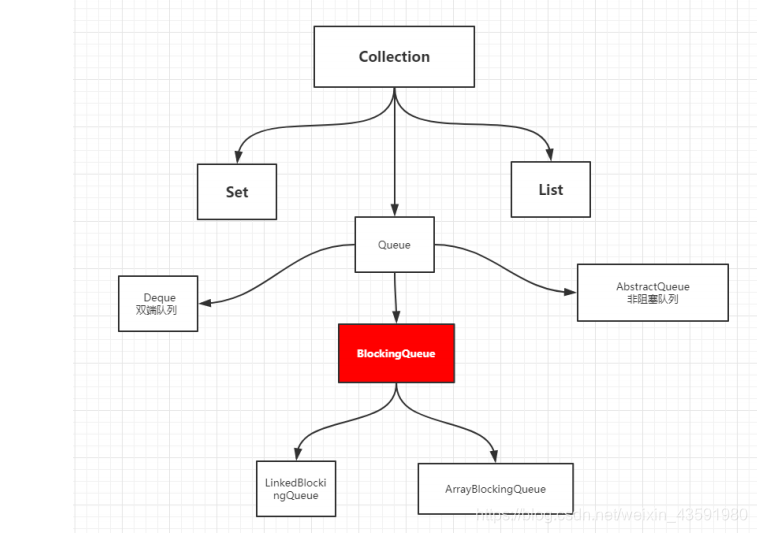
什么情况下我们会使用 阻塞队列?:多线程并发处理,线程池用的较多 !
学会使用队列
添加、移除
四组API
| 方式 | 抛出异常 | 有返回值,不抛出异常 | 阻塞 等待(reentrantlock) | 超时等待(reentrantlock) |
|---|---|---|---|---|
| 添加 | add | offer() | put() | offer() |
| 移除 | remove | poll() | take() | poll() |
| 检测队首元素 | element | peek() | - | - |
package com.kuang.bq;
import java.util.Collection;
import java.util.concurrent.ArrayBlockingQueue;
import java.util.concurrent.TimeUnit;
public class Test {
public static void main(String[] args) throws InterruptedException {
test4();
}
/**
* 1. 无返回值,抛出异常的方式
*/
public static void test1(){
// 队列的大小
ArrayBlockingQueue blockingQueue =
new ArrayBlockingQueue<>(3);
System.out.println(blockingQueue.add("a"));// true
System.out.println(blockingQueue.add("b"));// true
System.out.println(blockingQueue.add("c"));// true
// System.out.println(blockingQueue.add("d"));
// IllegalStateException: Queue full 抛出异常---队列已满!
System.out.println("===========================");
System.out.println(blockingQueue.element());//
// 查看队首元素是谁
System.out.println(blockingQueue.remove());//
System.out.println(blockingQueue.remove());//
System.out.println(blockingQueue.remove());//
// System.out.println(blockingQueue.remove());
// java.util.NoSuchElementException 抛出异常---队列已为空!
}
/**
* 2. 有返回值,不抛出异常的方式
*/
public static void test2(){
// 队列的大小
ArrayBlockingQueue blockingQueue =
new ArrayBlockingQueue<>(3);
System.out.println(blockingQueue.offer("a"));
System.out.println(blockingQueue.offer("b"));
System.out.println(blockingQueue.offer("c"));
System.out.println(blockingQueue.peek());
// System.out.println(blockingQueue.offer("d"));
// false 不抛出异常!
System.out.println("===========================");
System.out.println(blockingQueue.poll());
System.out.println(blockingQueue.poll());
System.out.println(blockingQueue.poll());
System.out.println(blockingQueue.poll());
// null 不抛出异常!
}
/**
* 3. 等待,阻塞(一直阻塞)
*/
public static void test3() throws InterruptedException {
// 队列的大小
ArrayBlockingQueue blockingQueue =
new ArrayBlockingQueue<>(3);
// 一直阻塞
blockingQueue.put("a");
blockingQueue.put("b");
blockingQueue.put("c");
// blockingQueue.put("d"); // 队列没有位置了,一直阻塞等待
System.out.println(blockingQueue.take());
System.out.println(blockingQueue.take());
System.out.println(blockingQueue.take());
System.out.println(blockingQueue.take());
// 没有这个元素,一直阻塞等待
}
/**
* 4. 等待,阻塞(等待超时)
*/
public static void test4() throws InterruptedException {
// 队列的大小
ArrayBlockingQueue blockingQueue =
new ArrayBlockingQueue<>(3);
blockingQueue.offer("a");
blockingQueue.offer("b");
blockingQueue.offer("c");
// blockingQueue.offer("d",2,TimeUnit.SECONDS);
// 等待超过2秒就退出
System.out.println("===============");
System.out.println(blockingQueue.poll());
System.out.println(blockingQueue.poll());
System.out.println(blockingQueue.poll());
blockingQueue.poll(2,TimeUnit.SECONDS); // 等待超过2秒就退出
}
}
SynchronousQueue
SynchronousQueue 同步队列
没有容量,进去一个元素,必须等待取出来之后,才能再往里面放一个元素!
put、take
代码举例:
package com.haust.bq;
import java.util.concurrent.BlockingQueue;
import java.util.concurrent.SynchronousQueue;
import java.util.concurrent.TimeUnit;
/**
* 同步队列:
* 和其他的BlockingQueue 不一样, SynchronousQueue 不存储元素
* put了一个元素,必须从里面先take取出来,否则不能在put进去值!
*/
public class SynchronousQueueDemo {
public static void main(String[] args) {
BlockingQueue<String> blockingQueue =
new SynchronousQueue<>(); // 同步队列
new Thread(()->{
try {
System.out.println(Thread.currentThread().getName()
+" put 1");
// put进入一个元素
blockingQueue.put("1");
System.out.println(Thread.currentThread().getName()
+" put 2");
blockingQueue.put("2");
System.out.println(Thread.currentThread().getName()
+" put 3");
blockingQueue.put("3");
} catch (InterruptedException e) {
e.printStackTrace();
}
},"T1").start();
new Thread(()->{
try {
// 睡眠3s取出一个元素
TimeUnit.SECONDS.sleep(3);
System.out.println(Thread.currentThread().getName()
+"=>"+blockingQueue.take());
TimeUnit.SECONDS.sleep(3);
System.out.println(Thread.currentThread().getName()
+"=>"+blockingQueue.take());
TimeUnit.SECONDS.sleep(3);
System.out.println(Thread.currentThread().getName()
+"=>"+blockingQueue.take());
} catch (InterruptedException e) {
e.printStackTrace();
}
},"T2").start();
}
}
执行结果如图所示:

12、线程池(重点)
线程池:3大方法、7大参数、4种拒绝策略
池化技术
程序的运行,本质:占用系统的资源! (优化资源的使用 => 池化技术)
线程池、连接池、内存池、对象池///… 创建、销毁。十分浪费资源
池化技术:事先准备好一些资源,有人要用,就来我这里拿,用完之后还给我。
线程池的好处:
- 1、降低系统资源的消耗
- 2、提高响应的速度
- 3、方便管理
线程复用、可以控制最大并发数、管理线程
线程池:3大方法
线程池:3大方法

示例代码:
package com.haust.pool;
import java.util.concurrent.ExecutorService;
import java.util.List;
import java.util.concurrent.Executors;
public class Demo01 {
public static void main(String[] args) {
// Executors 工具类、3大方法
// Executors.newSingleThreadExecutor();// 创建单个线程的线程池
// Executors.newFixedThreadPool(5);// 创建一个固定大小的线程池
// Executors.newCachedThreadPool();// 创建一个可伸缩的线程池
// 单个线程的线程池
ExecutorService threadPool =
Executors.newSingleThreadExecutor();
try {
for (int i = 1; i < 100; i++) {
// 使用了线程池之后,使用线程池来创建线程
threadPool.execute(()->{
System.out.println(
Thread.currentThread().getName()+" ok");
});
}
} catch (Exception e) {
e.printStackTrace();
} finally {
// 线程池用完,程序结束,关闭线程池
threadPool.shutdown();
}
}
}
线程池:7大参数
7大参数
源码分析:
public static ExecutorService newSingleThreadExecutor() {
return new FinalizableDelegatedExecutorService (
new ThreadPoolExecutor(
1,
1,
0L,
TimeUnit.MILLISECONDS,
new LinkedBlockingQueue<Runnable>()));
}
public static ExecutorService newFixedThreadPool(int nThreads) {
return new ThreadPoolExecutor(
5,
5,
0L,
TimeUnit.MILLISECONDS,
new LinkedBlockingQueue<Runnable>());
}
public static ExecutorService newCachedThreadPool() {
return new ThreadPoolExecutor(
0,
Integer.MAX_VALUE,
60L,
TimeUnit.SECONDS,
new SynchronousQueue<Runnable>());
}
// 本质ThreadPoolExecutor()
public ThreadPoolExecutor(int corePoolSize, // 核心线程池大小
int maximumPoolSize, // 最大核心线程池大小
long keepAliveTime, // 超时没有人调用就会释放
TimeUnit unit, // 超时单位
// 阻塞队列
BlockingQueue<Runnable> workQueue,
// 线程工厂:创建线程的,一般 不用动
ThreadFactory threadFactory,
// 拒绝策略
RejectedExecutionHandler handle ) {
if (corePoolSize < 0
|| maximumPoolSize <= 0
|| maximumPoolSize < corePoolSize
|| keepAliveTime < 0)
throw new IllegalArgumentException();
if (workQueue == null
|| threadFactory == null
|| handler == null)
throw new NullPointerException();
this.acc = System.getSecurityManager() == null
? null : AccessController.getContext();
this.corePoolSize = corePoolSize;
this.maximumPoolSize = maximumPoolSize;
this.workQueue = workQueue;
this.keepAliveTime = unit.toNanos(keepAliveTime);
this.threadFactory = threadFactory;
this.handler = handler;
}


手动创建一个线程池
因为实际开发中工具类Executors 不安全,所以需要手动创建线程池,自定义7个参数。
示例代码:
package com.haust.pool;
import java.util.ArrayList;
import java.util.List;
import java.util.concurrent.*;
// Executors 工具类、3大方法
// Executors.newSingleThreadExecutor();// 创建一个单个线程的线程池
// Executors.newFixedThreadPool(5);// 创建一个固定大小的线程池
// Executors.newCachedThreadPool();// 创建一个可伸缩的线程池
/**
* 四种拒绝策略:
*
* new ThreadPoolExecutor.AbortPolicy()
* 银行满了,还有人进来,不处理这个人的,抛出异常
*
* new ThreadPoolExecutor.CallerRunsPolicy()
* 哪来的去哪里!比如你爸爸 让你去通知妈妈洗衣服,妈妈拒绝,让你回去通知爸爸洗
*
* new ThreadPoolExecutor.DiscardPolicy()
* 队列满了,丢掉任务,不会抛出异常!
*
* new ThreadPoolExecutor.DiscardOldestPolicy()
* 队列满了,尝试去和最早的竞争,也不会抛出异常!
*/
public class Demo01 {
public static void main(String[] args) {
// 自定义线程池!工作 ThreadPoolExecutor
ExecutorService threadPool = new ThreadPoolExecutor(
2,// int corePoolSize, 核心线程池大小(候客区窗口2个)
5,// int maximumPoolSize, 最大核心线程池大小(总共5个窗口)
3,// long keepAliveTime, 超时3秒没有人调用就会释,放关闭窗口
TimeUnit.SECONDS,// TimeUnit unit, 超时单位 秒
new LinkedBlockingDeque<>(3),// 阻塞队列(候客区最多3人)
Executors.defaultThreadFactory(),// 默认线程工厂
// 4种拒绝策略之一:
// 队列满了,尝试去和 最早的竞争,也不会抛出异常!
new ThreadPoolExecutor.DiscardOldestPolicy());
//队列满了,尝试去和最早的竞争,也不会抛出异常!
try {
// 最大承载:Deque + max
// 超过 RejectedExecutionException
for (int i = 1; i <= 9; i++) {
// 使用了线程池之后,使用线程池来创建线程
threadPool.execute(()->{
System.out.println(
Thread.currentThread().getName()+" ok");
});
}
} catch (Exception e) {
e.printStackTrace();
} finally {
// 线程池用完,程序结束,关闭线程池
threadPool.shutdown();
}
}
}
线程池:4种拒绝策略
4种拒绝策略

/**
* 四种拒绝策略:
*
* new ThreadPoolExecutor.AbortPolicy()
* 银行满了,还有人进来,不处理这个人的,抛出异常
*
* new ThreadPoolExecutor.CallerRunsPolicy()
* 哪来的去哪里!比如你爸爸 让你去通知妈妈洗衣服,妈妈拒绝,让你回去通知爸爸洗
*
* new ThreadPoolExecutor.DiscardPolicy()
* 队列满了,丢掉任务,不会抛出异常!
*
* new ThreadPoolExecutor.DiscardOldestPolicy()
* 队列满了,尝试去和最早的竞争,也不会抛出异常!
*/
小结和拓展
池的最大容量如何去设置!
了解:IO密集型,CPU密集型:(调优)
直接上代码:
package com.haust.pool;
import java.util.ArrayList;
import java.util.List;
import java.util.concurrent.*;
public class Demo01 {
public static void main(String[] args) {
// 自定义线程池!工作 ThreadPoolExecutor
// 最大线程到底该如何定义
// 1、CPU 密集型,几核,就是几,可以保持CPu的效率最高!
// 2、IO 密集型 > 判断你程序中十分耗IO的线程,
// 比如程序 15个大型任务 io十分占用资源!
// IO密集型参数(最大线程数)就设置为大于15即可,一般选择两倍
// 获取CPU的核数
System.out.println(
Runtime.getRuntime().availableProcessors());// 8核
ExecutorService threadPool = new ThreadPoolExecutor(
2,// int corePoolSize, 核心线程池大小
// int maximumPoolSize, 最大核心线程池大小 8核电脑就是8
Runtime.getRuntime().availableProcessors(),
3,// long keepAliveTime, 超时3秒没有人调用就会释放
TimeUnit.SECONDS,// TimeUnit unit, 超时单位 秒
new LinkedBlockingDeque<>(3),// 阻塞队列(候客区最多3人)
Executors.defaultThreadFactory(),// 默认线程工厂
// 4种拒绝策略之一:
// 队列满了,尝试去和 最早的竞争,也不会抛出异常!
new ThreadPoolExecutor.DiscardOldestPolicy());
//队列满了,尝试去和最早的竞争,也不会抛出异常!
try {
// 最大承载:Deque + max
// 超过 RejectedExecutionException
for (int i = 1; i <= 9; i++) {
// 使用了线程池之后,使用线程池来创建线程
threadPool.execute(()->{
System.out.println(
Thread.currentThread().getName()+" ok");
});
}
} catch (Exception e) {
e.printStackTrace();
} finally {
// 线程池用完,程序结束,关闭线程池
threadPool.shutdown();
}
}
}
13、四大函数式接口(必需掌握)
新时代的程序员:lambda表达式、链式编程、函数式接口、Stream流式计算
函数式接口: 只有一个方法的接口
@FunctionalInterface
public interface Runnable {
public abstract void run();
}
// 泛型、枚举、反射
// lambda表达式、链式编程、函数式接口、Stream流式计算
// 超级多FunctionalInterface
// 简化编程模型,在新版本的框架底层大量应用!
// foreach(消费者类的函数式接口)
四大函数式接口:

[外链图片转存失败,源站可能有防盗链机制,建议将图片保存下来直接上传(img-JgJ4DgrY-1612153143956)(D:\Note\笔记\JUC并发编程\JUC笔记(下)].assets\image-20200726184704772.png)
Function 函数式接口
Function函数式接口

package com.haust.function;
import java.util.function.Function;
/**
* Function 函数型接口, 有一个输入参数,有一个输出参数
* 只要是 函数型接口 可以 用 lambda表达式简化
*/
public class Demo01 {
public static void main(String[] args) {
/*Function<String,String> function = new
Function<String,String>() {
@Override
public String apply(String str) {
return str;
}
};*/
// lambda 表达式简化:
Function<String,String> function = str->{
return str;};
System.out.println(function.apply("asd"));
}
}
等价于:
Function<String, String> function = new Function<String, String>() {
@Override
public String apply(String s) {
return s;
}
};
Predicate 断定型接口
断定型接口:有一个输入参数,返回值只能是 布尔值!

package com.haust.function;
import java.util.function.Predicate;
/*
* 断定型接口:有一个输入参数,返回值只能是 布尔值!
*/
public class Demo02 {
public static void main(String[] args) {
// 判断字符串是否为空
/*Predicate<String> predicate = new Predicate<String>(){
@Override
public boolean test(String str) {
return str.isEmpty();//true或false
}
};*/
Predicate<String> predicate =
(str)->{
return str.isEmpty(); };
System.out.println(predicate.test(""));//true
}
}
Consumer 消费型接口
Consumer 消费型接口

package com.haust.function;
import java.util.function.Consumer;
/**
* Consumer 消费型接口: 只有输入,没有返回值
*/
public class Demo03 {
public static void main(String[] args) {
/*Consumer<String> consumer = new Consumer<String>() {
@Override
public void accept(String str) {
System.out.println(str);
}
};*/
Consumer<String> consumer =
(str)->{
System.out.println(str);};
consumer.accept("sdadasd");
}
}
Supplier 供给型接口
Supplier 供给型接口

package com.haust.function;
import java.util.function.Supplier;
/**
* Supplier 供给型接口 没有参数,只有返回值
*/
public class Demo04 {
public static void main(String[] args) {
/*Supplier supplier = new Supplier<Integer>() {
@Override
public Integer get() {
System.out.println("get()");
return 1024;
}
};*/
Supplier supplier = ()->{
return 1024; };
System.out.println(supplier.get());
}
}
14、Stream 流式计算
什么是Stream流式计算
大数据:存储 + 计算
集合、MySQL 本质就是存储东西的;
计算都应该交给流来操作!

/**
* 题目要求:一分钟内完成此题,只能用一行代码实现!
* 现在有5个用户!筛选:
* 1、ID 必须是偶数
* 2、年龄必须大于23岁
* 3、用户名转为大写字母
* 4、用户名字母倒着排序
* 5、只输出一个用户!
*/
public class Test {
public static void main(String[] args) throws InterruptedException {
User user1 = new User(2, "zhangsan", 12);
User user2 = new User(3, "lisi", 32);
User user3 = new User(4, "wangwu", 52);
User user4 = new User(5, "zhaoliu", 62);
User user5 = new User(6, "qianqi", 72);
List<User> list = Arrays.asList(user1, user2, user3, user4, user5);
list.stream().filter(user -> user.getId() % 2 == 0)
.filter(user -> user.getAge() > 23)
.map(user -> user.getUsername().toUpperCase())
.sorted((u1, u2) -> u2.compareTo(u1))
.limit(1)
.forEach(System.out::println);
}
}
15、ForkJoin
什么是 ForkJoin
ForkJoin 在 JDK 1.7 , 并行执行任务!提高效率。大数据量!
大数据:Map Reduce (把大任务拆分为小任务)

ForkJoin 特点:工作窃取
这个里面维护的都是双端队列

ForkJoin


Fork-Join 是一种并行计算模式,用于处理任务的分解与合并。在Java中,
java.util.concurrent包提供了ForkJoinPool和ForkJoinTask来实现 Fork-Join 框架。
ForkJoinPool:
ForkJoinPool是一个线程池,专门用于执行ForkJoinTask。它通常会创建与处理器数量相等的工作线程,并且这些线程可以执行提交的ForkJoinTask。ForkJoinTask:
ForkJoinTask是一个抽象类,用于表示可以被ForkJoinPool执行的任务。它有两个主要的子类:RecursiveAction和RecursiveTask。
RecursiveAction:用于表示没有返回值的任务。通常用于执行一些操作而不需要返回结果。
RecursiveTask:用于表示有返回值的任务。通常用于执行一些计算并返回结果。
package com.fatfish.forkjoin;
import java.util.concurrent.ExecutionException;
import java.util.concurrent.ForkJoinPool;
import java.util.concurrent.ForkJoinTask;
import java.util.concurrent.RecursiveTask;
import java.util.stream.LongStream;
public class ForkJoinDemo extends RecursiveTask<Long> {
private Long start;
private Long end;
private static final Long THRESHOLD = 1000L;
public ForkJoinDemo(Long start, Long end) {
this.start = start;
this.end = end;
}
@Override
protected Long compute() {
if (end - start < THRESHOLD) {
long sum = 0L;
for (long i = start; i <= end; i++) sum += i;
return sum;
} else {
long mid = start + (end - start) / 2;
ForkJoinDemo task1 = new ForkJoinDemo(start, mid);
ForkJoinDemo task2 = new ForkJoinDemo(mid + 1, end);
task1.fork();
task2.fork();
return task1.join() + task2.join();
}
}
public static void main(String[] args) throws ExecutionException, InterruptedException {
long start = 0L, end = 100_000_000_000L;
System.out.println("================================串行执行================================");
sequencialRun(start, end);
System.out.println("================================forkJoin执行================================");
forkJoinRun(start, end);
System.out.println("================================并行流parallel执行================================");
streamParallelRun(start, end);
}
private static void streamParallelRun(long start, long end) {
long sum = 0L;
long startTime = System.currentTimeMillis();
sum = LongStream.rangeClosed(start, end)
.parallel()
.reduce(0, Long::sum);
long endTime = System.currentTimeMillis();
System.out.println("结果为:" + sum + ", 用时:" + (endTime - startTime) + "ms");
}
private static void forkJoinRun(long start, long end) throws ExecutionException, InterruptedException {
long sum = 0L;
long startTime = System.currentTimeMillis();
ForkJoinPool forkJoinPool = new ForkJoinPool();
ForkJoinTask<Long> task = new ForkJoinDemo(start, end);
ForkJoinTask<Long> submit = forkJoinPool.submit(task);
sum = submit.get();
long endTime = System.currentTimeMillis();
System.out.println("结果为:" + sum + ", 用时:" + (endTime - startTime) + "ms");
}
private static void sequencialRun(long start, long end) {
long sum = 0L;
long startTime = System.currentTimeMillis();
for (long i = start; i <= end; i++) sum += i;
long endTime = System.currentTimeMillis();
System.out.println("结果为:" + sum + ", 用时:" + (endTime - startTime) + "ms");
}
}
执行结果:
================================串行执行================================
结果为:932356074711512064, 用时:22882ms
================================forkJoin执行================================
结果为:932356074711512064, 用时:9793ms
================================并行流parallel执行================================
结果为:932356074711512064, 用时:3987ms
16、异步回调
Future 设计的初衷: 对将来的某个事件的结果进行建模

没有返回值的 runAsync 异步回调:
public class Test {
public static void main(String[] args) throws InterruptedException, ExecutionException {
// 没有返回值的 runAsync 异步回调
CompletableFuture<Void> completableFuture =
CompletableFuture.runAsync(() -> {
try {
TimeUnit.SECONDS.sleep(2);
} catch (InterruptedException e) {
e.printStackTrace();
}
System.out.println(Thread.currentThread().getName() + "runAsync=>Void");
});
System.out.println("1111");
completableFuture.get(); // 执行异步任务,获取阻塞执行结果
}
}
有返回值的 supplyAsync 异步回调:
public class Test {
public static void main(String[] args) throws InterruptedException, ExecutionException {
// 有返回值的 supplyAsync 异步回调
// ajax,成功和失败的回调
// 返回的是错误信息;
CompletableFuture<Integer> completableFuture = CompletableFuture.supplyAsync(
() -> {
System.out.println(Thread.currentThread().getName() + ",supplyAsync=>Integer");
int i = 10 / 0;
return 1024;
});
System.out.println(completableFuture.whenComplete(
(t, u) -> {
System.out.println("t=>" + t); // 正常的返回结果
System.out.println("u=>" + u);
// 错误信息:
// java.util.concurrent.CompletionException:
// java.lang.ArithmeticException: / by zero
})
.exceptionally((e) -> {
System.out.println(e.getMessage());
return 233; // 可以获取到错误的返回结果
}).get());
}
}
17、JMM
请你谈谈你对 Volatile 的理解
Volatile 是 Java 虚拟机提供轻量级的同步机制,类似于synchronized 但是没有其强大。
1、保证可见性
2、不保证原子性
3、防止指令重排
可见性: 当一个变量被声明为
volatile后,当一个线程修改了这个变量的值后,其他线程能够立即看到这个变量的最新值。这是因为volatile修饰的变量会被存储在主内存中,而不是线程的本地缓存中,所以当一个线程修改了volatile变量的值后,其他线程可以立即从主内存中读取到这个最新的值,从而实现了可见性。防止指令重排序: 当一个变量被声明为
volatile后,在读取和写入这个变量时会禁止指令重排序。这意味着在一个线程写入一个volatile变量之后,后续的读操作不能被重排序到这个写操作之前。这样可以确保其他线程能够看到最新的值。因为编译器和处理器知道volatile变量可能会被其他线程修改,所以会避免对volatile变量进行优化,从而防止了指令重排序。不保证原子性: 尽管
volatile变量可以确保可见性和禁止指令重排序,但它并不保证操作的原子性。原子性是指一个操作是不可分割的,要么全部执行成功,要么全部不执行,不会出现中间状态。volatile只保证了对变量的读取和写入是原子的,但对于复合操作,如count++这样的自增操作,volatile是无法保证原子性的,因为这是一个复合操作,包括读取、自增和写回这三个步骤,其中任意一步都可能被其他线程打断,从而导致最终结果不是预期的。(在多线程环境下,如果需要保证原子性的操作,需要使用synchronized或者java.util.concurrent.atomic包中提供的原子类。)
什么是JMM
JMM : Java内存模型,不存在的东西,概念!约定!
关于JMM的一些同步的约定:
1、线程解锁前,必须把共享变量立刻刷回主存。
2、线程加锁前,必须读取主存中的最新值到工作内存中!
3、加锁和解锁是同一把锁。
线程 工作内存 、主内存
8 种操作:


内存交互操作有8种,虚拟机实现必须保证每一个操作都是原子的,不可在分的(对于double和long类型的变量来说,load、store、read和writ操作在某些平台上允许例外)
- lock (锁定):作用于主内存的变量,把一个变量标识为线程独占状态
- unlock (解锁):作用于主内存的变量,它把一个处于锁定状态的变量释放出来,释放后的变量才可以被其他线程锁定
- read (读取):作用于主内存变量,它把一个变量的值从主内存传输到线程的工作内存中,以便随后的load动作使用
- load (载入):作用于工作内存的变量,它把read操作从主存中变量放入工作内存中
- use (使用):作用于工作内存中的变量,它把工作内存中的变量传输给执行引擎,每当虚拟机遇到一个需要使用到变量的值,就会使用到这个指令
- assign (赋值):作用于工作内存中的变量,它把一个从执行引擎中接受到的值放入工作内存的变量副本中
- store (存储):作用于主内存中的变量,它把一个从工作内存中一个变量的值传送到主内存中,以便后续的write使用
- write (写入):作用于主内存中的变量,它把store操作从工作内存中得到的变量的值放入主内存的变量中
JMM 对这八种指令的使用,制定了如下规则:
- 不允许read和load、store和write操作之一单独出现。即使用了read必须load,使用了store必须write
- 不允许线程丢弃他最近的assign操作,即工作变量的数据改变了之后,必须告知主存
- 不允许一个线程将没有assign的数据从工作内存同步回主内存
- 一个新的变量必须在主内存中诞生,不允许工作内存直接使用一个未被初始化的变量。就是怼变量实施use、store操作之前,必须经过assign和load操作
- 一个变量同一时间只有一个线程能对其进行lock。多次lock后,必须执行相同次数的unlock才能解锁
- 如果对一个变量进行lock操作,会清空所有工作内存中此变量的值,在执行引擎使用这个变量前,必须重新load或assign操作初始化变量的值
- 如果一个变量没有被lock,就不能对其进行unlock操作。也不能unlock一个被其他线程锁住的变量
- 对一个变量进行unlock操作之前,必须把此变量同步回主内存
问题: 程序不知道主内存的值已经被修改过了

18、Volatile
1、保证可见性
package com.haust.tvolatile;
import java.util.concurrent.TimeUnit;
public class JMMDemo {
// 不加 volatile 程序就会死循环!
// 加 volatile 可以保证可见性
private volatile static int num = 0;
public static void main(String[] args) {
// main
new Thread(()->{
// 线程 1 对主内存的变化不知道的
while (num==0){
}
}).start();
try {
TimeUnit.SECONDS.sleep(1);
} catch (InterruptedException e) {
e.printStackTrace();
}
num = 1;
System.out.println(num);
}
}
不保证原子性
原子性 : 不可分割
线程A在执行任务的时候,不能被打扰的,也不能被分割。要么同时成功,要么同时失败。
package com.haust.tvolatile;
import java.util.concurrent.atomic.AtomicInteger;
// volatile 不保证原子性
public class VDemo02 {
// volatile 不保证原子性
// 原子类的 Integer
private volatile static AtomicInteger num = new AtomicInteger();
public static void add(){
// num++; // 不是一个原子性操作
num.getAndIncrement(); // AtomicInteger + 1 方法, CAS
}
public static void main(String[] args) {
//理论上num结果应该为 2 万
for (int i = 1; i <= 20; i++) {
new Thread(()->{
for (int j = 0; j < 1000 ; j++) {
add();
}
}).start();
}
// 判断只要剩下的线程不大于2个,就说明20个创建的线程已经执行结束
while (Thread.activeCount()>2){
// Java 默认有 main gc 2个线程
Thread.yield();
}
System.out.println(Thread.currentThread().getName()
+ " " + num);
}
}
如果不加 lock 和 synchronized ,怎么样保证原子性

使用原子类,解决原子性问题。

// volatile 不保证原子性
// 原子类的 Integer
private volatile static AtomicInteger num = new AtomicInteger();
public static void add(){
// num++; // 不是一个原子性操作
num.getAndIncrement(); // AtomicInteger + 1 方法, CAS
}
这些类的底层都直接和操作系统挂钩!在内存中修改值!Unsafe类是一个很特殊的存在!
指令重排
什么是指令重排?:我们写的程序,计算机并不是按照你写的那样去执行的。
源代码 —> 编译器优化的重排 —> 指令并行也可能会重排 —> 内存系统也会重排 ——> 执行
处理器在执行指令重排的时候,会考虑:数据之间的依赖性
int x = 1; // 1
int y = 2; // 2
x = x + 5; // 3
y = x * x; // 4
我们所期望的:1234 但是可能执行的时候会变成 2134 或者 1324
但是不可能是 4123!
前提:a b x y 这四个值默认都是 0:
可能造成影响得到不同的结果:
| 线程A | 线程B |
|---|---|
| x = a | y = b |
| b =1 | a = 2 |
正常的结果:x = 0; y = 0; 但是可能由于指令重排出现以下结果:
| 线程A | 线程B |
|---|---|
| b = 1 | a = 2 |
| x = a | y = b |
指令重排导致的诡异结果: x = 2; y = 1;
非计算机专业
volatile 可以避免指令重排:
内存屏障。CPU指令。作用:
- 保证特定操作的执行顺序!
- 可以保证某些变量的内存可见性 (利用这些特性volatile 实现了可见性)

volatile 是可以保证可见性。不能保证原子性,由于内存屏障,可以保证避免指令重排的现象产生!
volatile 内存屏障在单例模式中使用的最多!
19、彻底玩转单例模式
DCL懒汉式:
package com.haust.single;
import java.lang.reflect.Constructor;
import java.lang.reflect.Field;
// 懒汉式单例
// 道高一尺,魔高一丈!
public class LazyMan {
private static boolean csp = false;// 标志位
// 单例不安全,因为反射可以破坏单例,如下解决这个问题:
private LazyMan(){
synchronized (LazyMan.class){
if (csp == false){
csp = true;
}else {
throw new RuntimeException("不要试图使用反射破坏异常");
}
}
}
/**
* 计算机指令执行顺序:
* 1. 分配内存空间
* 2、执行构造方法,初始化对象
* 3、把这个对象指向这个空间
*
* 期望顺序是:123
* 特殊情况下实际执行:132 ===> 此时 A 线程没有问题
* 若额外加一个 B 线程
* 此时lazyMan还没有完成构造
*/
// 原子性操作:避免指令重排
private volatile static LazyMan lazyMan;
// 双重检测锁模式的 懒汉式单例 DCL懒汉式
public static LazyMan getInstance(){
if (lazyMan==null){
synchronized (LazyMan.class){
if (lazyMan==null){
lazyMan = new LazyMan(); // 不是一个原子性操作
}
}
}
return lazyMan;
}
// 反射!
public static void main(String[] args) throws Exception {
//LazyMan instance = LazyMan.getInstance();
Field qinjiang = LazyMan.class.getDeclaredField("csp");
csp.setAccessible(true);
Constructor<LazyMan> declaredConstructor =
LazyMan.class.getDeclaredConstructor(null);
declaredConstructor.setAccessible(true);
LazyMan instance = declaredConstructor.newInstance();
qinjiang.set(instance,false);
LazyMan instance2 = declaredConstructor.newInstance();
System.out.println(instance);
System.out.println(instance2);
}
}
单例模式(Java实现)-CSDN博客
20、深入理解CAS
什么是 CAS
大厂你必须要深入研究底层!有所突破! 修内功,操作系统,计算机网络原理
package com.kuang.cas;
import java.util.concurrent.atomic.AtomicInteger;
public class CASDemo {
// CAS compareAndSet : 比较并交换!
public static void main(String[] args) {
AtomicInteger atomicInteger = new AtomicInteger(2020);
// 期望、更新
// public final boolean compareAndSet(int expect, int update)
// 如果我期望的值达到了,那么就更新,否则,就不更新, CAS 是CPU的并发原语!
System.out.println(atomicInteger.compareAndSet(2020, 2021));
System.out.println(atomicInteger.get());
atomicInteger.getAndIncrement() // 看底层如何实现 ++
System.out.println(atomicInteger.compareAndSet(2020, 2021));
System.out.println(atomicInteger.get());
}
}
执行结果如图:
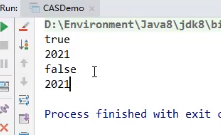
Unsafe 类



CAS : 比较当前工作内存中的值和主内存中的值,如果这个值是期望的,那么则执行操作!如果不是就
一直循环!
CAS : ABA 问题(狸猫换太子)

package com.haust.cas;
import java.util.concurrent.atomic.AtomicInteger;
public class CASDemo {
// CAS compareAndSet : 比较并交换!
public static void main(String[] args) {
AtomicInteger atomicInteger = new AtomicInteger(2020);
/*
* 类似于我们平时写的SQL:乐观锁
*
* 如果某个线程在执行操作某个对象的时候,其他线程若操作了该对象,
* 即使对象内容未发生变化,也需要告诉我。
*
* 期望、更新:
* public final boolean compareAndSet(int expect, int update)
* 如果我期望的值达到了,那么就更新,否则,就不更新, CAS 是CPU的并发原语!
*/
// ============== 捣乱的线程 ==================
System.out.println(atomicInteger.compareAndSet(2020, 2021));
System.out.println(atomicInteger.get());
System.out.println(atomicInteger.compareAndSet(2021, 2020));
System.out.println(atomicInteger.get());
// ============== 期望的线程 ==================
System.out.println(atomicInteger.compareAndSet(2020, 6666));
System.out.println(atomicInteger.get());
}
}
输出结果如图:
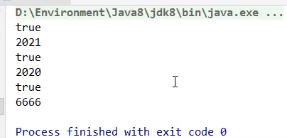
21、原子引用
解决ABA 问题,引入原子引用! 对应的思想:乐观锁!
带版本号 的原子操作!
package com.haust.cas;
import java.util.concurrent.TimeUnit;
import java.util.concurrent.atomic.AtomicStampedReference;
public class CASDemo {
/*
* AtomicStampedReference 注意,
* 如果泛型是一个包装类,注意对象的引用问题
* 正常在业务操作,这里面比较的都是一个个对象
*/
// 可以有一个初始对应的版本号 1
static AtomicStampedReference<Integer>
atomicStampedReference =
new AtomicStampedReference<>(2020,1);
// CAS compareAndSet : 比较并交换!
public static void main(String[] args) {
new Thread(()->{
// 获得版本号
int stamp = atomicStampedReference.getStamp();
System.out.println("a1=>"+stamp);
try {
TimeUnit.SECONDS.sleep(2);
} catch (InterruptedException e) {
e.printStackTrace();
}
atomicStampedReference.compareAndSet(
2020,
2022,
atomicStampedReference.getStamp(), // 最新版本号
// 更新版本号
atomicStampedReference.getStamp() + 1);
System.out.println("a2=>"
+atomicStampedReference.getStamp());
System.out.println(
atomicStampedReference.compareAndSet(
2022,
2020,
atomicStampedReference.getStamp(),
atomicStampedReference.getStamp() + 1));
System.out.println("a3=>"
+atomicStampedReference.getStamp());
},"a").start();
// 乐观锁的原理相同!
new Thread(()->{
// 获得版本号
int stamp = atomicStampedReference.getStamp();
System.out.println("b1=>"+stamp);
try {
TimeUnit.SECONDS.sleep(2);
} catch (InterruptedException e) {
e.printStackTrace();
}
System.out.println(
atomicStampedReference.compareAndSet(
2020, 6666, stamp, stamp + 1));
System.out.println("b2=>"
+atomicStampedReference.getStamp());
},"b").start();
}
}
结果如图:

参考:AtomicStampedReference是怎样解决CAS的ABA问题-腾讯云开发者社区-腾讯云
// CAS compareAndSet : 比较并交换!
public static void main(String[] args) {
final AtomicStampedReference<Integer> count = new AtomicStampedReference<>(5, 1);
for (int i = 0; i < 2; i++) {
Thread thread = new Thread(() -> {
try {
Thread.sleep(10);
} catch (Exception ignore) {
}
boolean re = count.compareAndSet(5, 10, 1, 2);
System.out.println(Thread.currentThread().getName() + "[recharge] compareAndSet " + re);
});
thread.start();
}
Thread thread = new Thread(() -> {
try {
Thread.sleep(10);
} catch (Exception ignore) {
}
boolean re = count.compareAndSet(10, 5, count.getStamp(), count.getStamp() + 1);
System.out.println(Thread.currentThread().getName() + "[consume] compareAndSet " + re);
});
thread.start();
}
结果:
Thread-1[recharge] compareAndSet true
Thread-2[consume] compareAndSet true
Thread-0[recharge] compareAndSet false
注意:
Integer 使用了对象缓存机制,默认范围是 -128 ~ 127 ,推荐使用静态工厂方法 valueOf 获取对象实例,而不是 new,因为 valueOf 使用缓存,而 new 一定会创建新的对象分配新的内存空间;
下面是阿里巴巴开发手册的规范点:

22、各种锁的理解
1、公平锁、非公平锁
公平锁: 非常公平, 不能够插队,必须先来后到!
非公平锁:非常不公平,可以插队 (默认都是非公平)
public ReentrantLock() {
sync = new NonfairSync();
}
public ReentrantLock(boolean fair) {
sync = fair ? new FairSync() : new NonfairSync();
}
2、可重入锁
可重入锁(递归锁)

Synchronized 版
public class Test {
public static void main(String[] args) {
Phone phone = new Phone();
// 这里的锁定对象是 Phone 类的实例 phone
new Thread(phone::sms, "A").start();
new Thread(phone::sms, "B").start();
new Thread(phone::sms, "C").start();
new Thread(phone::sms, "D").start();
}
static class Phone {
public synchronized void sms() {
System.out.println(Thread.currentThread().getName() + "sms");
try {
Thread.sleep(1000);
} catch (InterruptedException e) {
e.printStackTrace();
}
call(); // 这里也有锁(sms锁 里面的call锁)
}
public synchronized void call() {
System.out.println(Thread.currentThread().getName() + "call");
}
}
}
Lock 版
package com.haust.lock;
import java.util.concurrent.locks.Lock;
import java.util.concurrent.locks.ReentrantLock;
public class Demo02 {
public static void main(String[] args) {
Phone2 phone = new Phone2();
new Thread(()->{
phone.sms();
},"A").start();
new Thread(()->{
phone.sms();
},"B").start();
}
}
class Phone2{
Lock lock = new ReentrantLock();
public void sms(){
lock.lock();
// 细节问题:lock.lock(); lock.unlock();
// lock 锁必须配对,否则就会死在里面
// 两个lock() 就需要两次解锁
lock.lock();
try {
System.out.println(Thread.currentThread().getName()
+ "sms");
call(); // 这里也有锁
} catch (Exception e) {
e.printStackTrace();
} finally {
lock.unlock();
lock.unlock();
}
}
public void call(){
lock.lock();
try {
System.out.println(Thread.currentThread().getName()
+ "call");
} catch (Exception e) {
e.printStackTrace();
} finally {
lock.unlock();
}
}
}
3、自旋锁
spinlock

我们来自定义一个锁测试:
package com.haust.lock;
import java.util.concurrent.atomic.AtomicReference;
/**
* 自旋锁
*/
public class SpinlockDemo {
// int 0
// Thread null
// 原子引用
AtomicReference<Thread> atomicReference =
new AtomicReference<>();
// 加锁
public void myLock(){
Thread thread = Thread.currentThread();
System.out.println(Thread.currentThread().getName()
+ "==> mylock");
// 自旋锁
while (!atomicReference.compareAndSet(null,thread)){
}
}
// 解锁
// 加锁
public void myUnLock(){
Thread thread = Thread.currentThread();
System.out.println(Thread.currentThread().getName()
+ "==> myUnlock");
atomicReference.compareAndSet(thread,null);// 解锁
}
}
测试
package com.haust.lock;
import java.util.concurrent.TimeUnit;
public class TestSpinLock {
public static void main(String[] args) throws
InterruptedException {
// ReentrantLock reentrantLock = new ReentrantLock();
// reentrantLock.lock();
// reentrantLock.unlock();
// 底层使用的自旋锁CAS
SpinlockDemo lock = new SpinlockDemo();// 定义锁
new Thread(()-> {
lock.myLock();// 加锁
try {
TimeUnit.SECONDS.sleep(5);
} catch (Exception e) {
e.printStackTrace();
} finally {
lock.myUnLock();// 解锁
}
},"T1").start();
TimeUnit.SECONDS.sleep(1);
new Thread(()-> {
lock.myLock();
try {
TimeUnit.SECONDS.sleep(1);
} catch (Exception e) {
e.printStackTrace();
} finally {
lock.myUnLock();
}
},"T2").start();
}
}
结果如图:
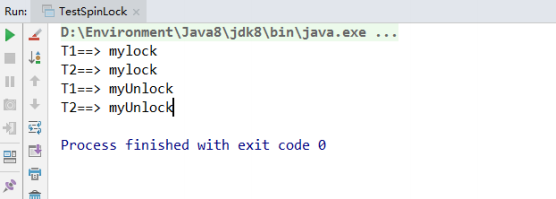
补充:AtomicReference
AtomicReference是 Java 中的一个原子引用类,它提供了一种线程安全地操作对象引用的机制。它可以确保在多线程环境中对对象引用的操作是原子的,不会出现竞态条件。
AtomicReference类提供了一系列原子操作方法,包括设置值、获取当前值、比较并设置等。这些方法能够保证在执行操作时,不会被其他线程中断,从而确保了线程安全。以下是
AtomicReference类的主要方法:
get():获取当前存储的对象引用。set(T newValue):设置存储的对象引用为指定的新值。getAndSet(T newValue):设置存储的对象引用为指定的新值,并返回之前的值。compareAndSet(T expect, T update):如果当前存储的对象引用与期望值(expect)相等,则将其设置为新值(update),返回true;否则不修改,并返回false。weakCompareAndSet(T expect, T update):与compareAndSet类似,但是使用了更弱的原子保证。lazySet(T newValue):最终将存储的对象引用设置为指定的新值,但是可能对其他操作不具有立即可见性。
AtomicReference可以用于各种情况,例如在单例模式中保证单例对象的唯一性,或者在数据结构中保证对引用对象的并发访问安全。
4、死锁
死锁是什么?

参考
狂神JUC笔记(上)-KuangStudy-文章
狂神JUC笔记(下)-KuangStudy-文章
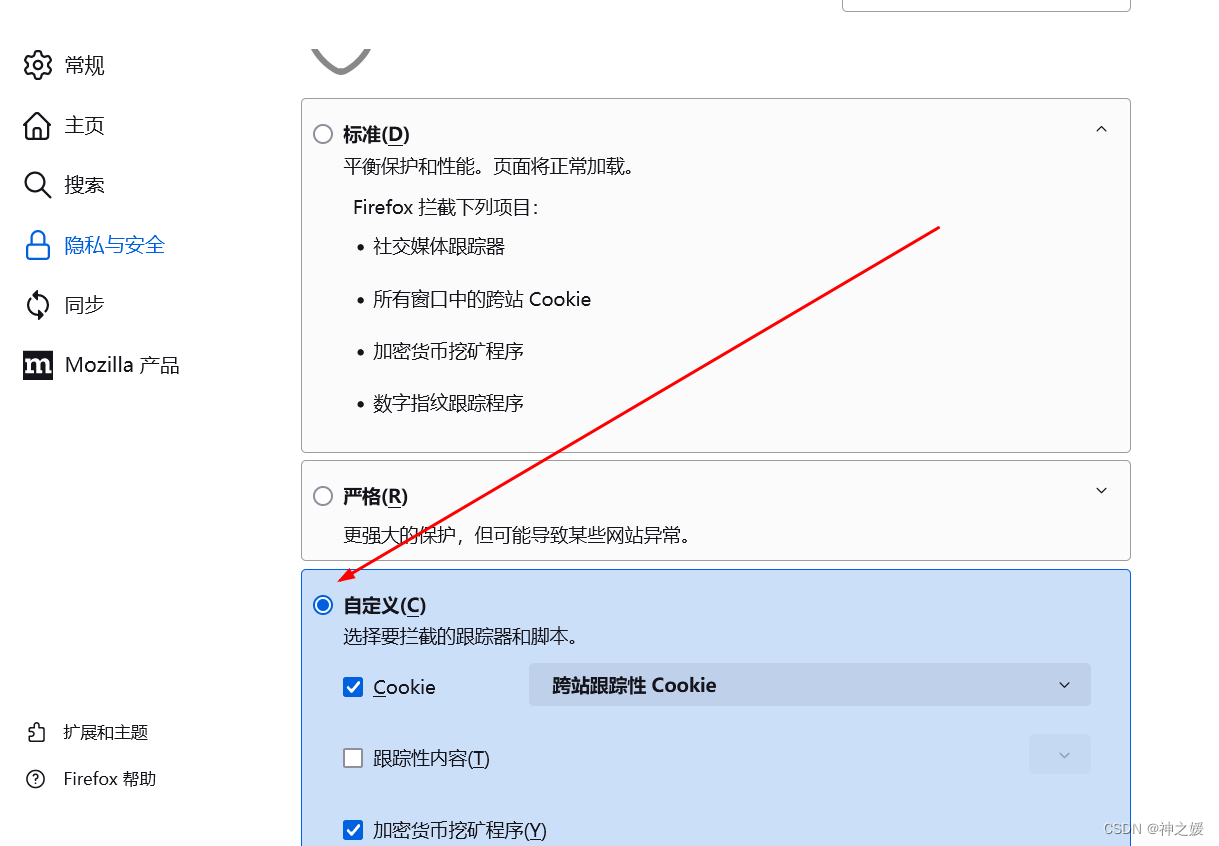


![[机缘参悟-191] - 《道家-水木然人间清醒1》读书笔记 -14- 关系界限 - 经济和人格上的独立,走向成熟的必经之路,才能更好的谈其他情感(IT)](https://img-blog.csdnimg.cn/direct/b8c265c5a7e043ce80c87e5d24ff4999.png)





![【Qt秘籍】[003]-Qt环境变量配置-磨刀不误砍柴工](https://img-blog.csdnimg.cn/direct/babf7d71000e496b8fd90a1774d167c7.png)
